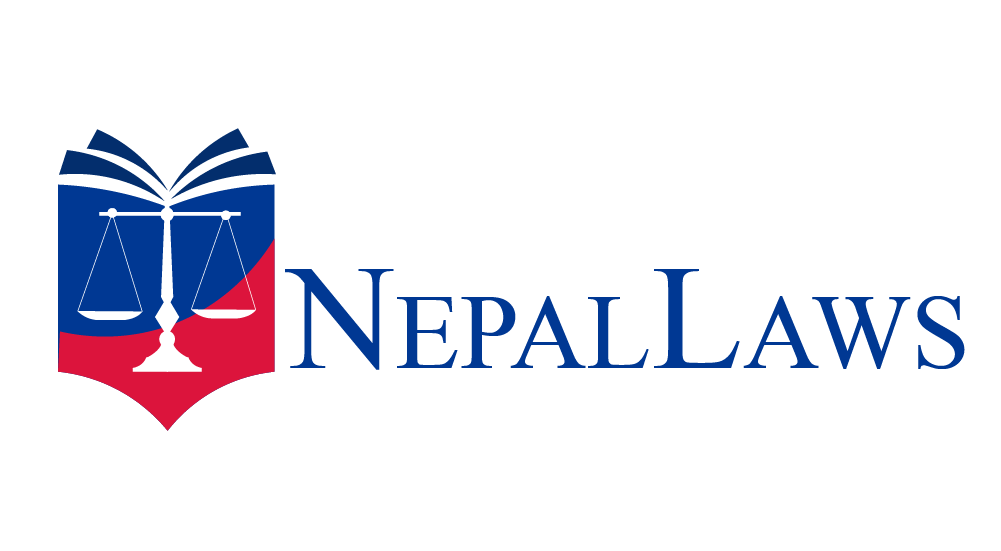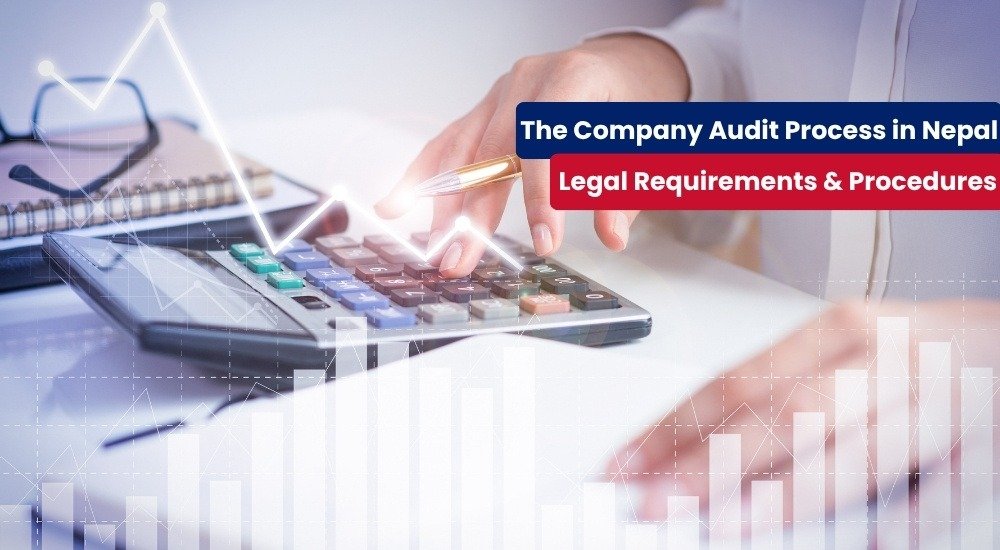In Nepal, company audits play a crucial role in ensuring that companies operate with transparency, financial integrity, and in compliance with the law.
The Companies Act, 2063 mandates that all companies, except those exempted, undergo regular audits and that their financial statements be accurate and fair.
The audit process helps build trust with stakeholders and ensures the company complies with national standards and regulations.
In this article, we will examine the audit process in Nepal under the Companies Act, 2063, focusing on key provisions, the responsibilities of auditors, and the step-by-step process that companies must follow.
What Is a Company Audit?
A company audit is an independent review of a company’s records and statements by a qualified external auditor.
The primary purpose of an audit is to verify that the company’s financial statements are accurate, free from material misstatements, and comply with the applicable laws and accounting standards.
Audits also help detect fraud, ensure financial transparency, and confirm that the company’s operations are aligned with shareholder interests and legal obligations.
Oversight of Company Audits in Nepal
The Institute of Chartered Accountants of Nepal (ICAN) oversees audits of companies in Nepal.
Established under the Nepal Chartered Accountants Act, 2053, ICAN regulates the accounting profession, sets auditing standards, and licenses auditors.
ICAN works with the Office of the Company Registrar (OCR) to ensure compliance with audit requirements and enforces professional standards.
Laws Governing Company Audits in Nepal
Several key laws govern the audit process in Nepal:
- Companies Act, 2063 - Mandates annual audits for companies and outlines the appointment, duties, and qualifications of auditors in Chapter 8.
- Audit Act, 2048 - Provides procedures for auditing government and company financials.
- Income Tax Act, 2058 - Ensures compliance with tax laws through audits.
- Nepal Chartered Accounts Act, 2053 - Establishes and regulates ICAN and licensing of auditors.
- Securities Act, 2063 - Requires audits for listed companies on NEPSE.
- Nepal Financial Reporting Standards (NFRS) - Guides the preparation of financial statements.
- Nepal Standards on Auditing (NSA) - Sets auditing standards for auditors in Nepal, ensuring they follow international best practices.

What Are the Types of Company Audits?
There are several types of company audits conducted in Nepal, each serving a distinct purpose. Here are the main types:
- Statutory Audit – Required by law for all registered companies to ensure compliance with accounting standards and legal regulations.
- Internal Audit – Conducted by the company’s own staff to assess the efficiency of internal controls and processes.
- Tax Audit – Focuses on verifying the company’s compliance with tax laws, including income tax calculations and deductions.
- Compliance Audit – Ensures that the company adheres to specific laws, regulations, or industry standards relevant to its operations.
- Performance Audit – Evaluates the efficiency and effectiveness of the company’s operations, helping to improve performance and resource utilisation.
- Forensic Audit – Investigates potential fraud, financial mismanagement, or irregularities within the company.
- Information System Audit – Assesses the company’s IT systems, data security, and information management practices.
Each audit type is designed to address specific concerns, and the need for a particular audit may depend on factors such as the company’s size, industry, and regulatory requirements.
Required Documents for Company Audit
To conduct a thorough company audit in Nepal, several key documents are required.
These documents serve as the foundation for auditors to verify the accuracy and completeness of the company’s financial information.
Below is an explanation of each essential document in simple terms:
Financial statements are the core documents of any audit and comprise three major elements: the balance sheet, the income statement, and the cash flow statement.
A balance sheet provides a snapshot of a company’s financial position, listing its assets, liabilities, and equity. It helps auditors determine whether the company’s financial situation is stable.
An income statement summarises the company’s revenues, expenses, and profits or losses over a period. Auditors review this to ensure that income and costs are reported accurately.
A cash flow statement tracks a company’s cash inflows and outflows. Auditors need to assess the company’s ability to meet its short-term obligations and financial health.
The General Ledger is the company’s complete record of all its financial transactions.
It includes details of every economic activity, like sales, purchases, and expenses.
A Trial Balance summarises the ledger balances. It ensures that debits and credits balance and provides auditors with a quick check to verify the accuracy of the company’s financial records before conducting detailed auditing.
Bank Statements show the company’s bank transactions, including deposits, withdrawals, and any bank charges.
Auditors review these to verify that the company’s reported bank balances match the actual balances in the accounts.
Bank Reconciliations are conducted to ensure that the company’s records align with the bank’s records.
This process helps auditors confirm that there are no discrepancies between the company’s reported amounts and the actual transactions in its bank accounts.
Inventory Records detail the goods or materials the company holds for sale or production.
Auditors use these records to verify that the company’s stock is accurately valued and that the physical stock matches the recorded inventory in the financial books.
This helps ensure that there are no discrepancies, such as unaccounted goods or overstatements of inventory value.
The Fixed Asset Register tracks the company’s long-term assets, such as machinery, buildings, vehicles, and equipment.
The register includes information about each asset’s purchase date, cost, and depreciation.
Auditors review this register to ensure the company has correctly valued its assets and applied amortisation in accordance with accounting standards.
Tax Returns show the taxes a company has paid or is liable to pay, including income tax and value-added tax (VAT).
Related Documents, such as tax receipts or proof of deductions, support tax filings and provide the necessary backup to verify the company’s tax compliance.
The Minutes of Board Meetings are official records of the decisions and discussions made by the company’s board of directors.
Auditors review these minutes to ensure that the financial transactions recorded in the company’s accounts are consistent with board-approved actions and decisions, helping to maintain transparency in decision-making.
Contracts and Agreements include all the legally binding agreements the company has entered into, such as those with suppliers, clients, or employees.
Auditors review these contracts to verify that financial obligations, such as contract revenue and expenses, are accurately reflected in the financial records and that no liabilities or payments are overlooked.
Payroll Records detail the company’s employee salaries, wages, bonuses, and other forms of compensation.
Auditors review these records to ensure the company properly reports employee-related expenses and complies with tax regulations and employment laws.
Payroll audits also confirm that the company is making the appropriate tax, social security, and other benefit deductions as required by law.
Steps in the Audit Process in Nepal
The audit process in Nepal follows a standard procedure to ensure that the company’s financial records are accurately evaluated and reviewed.
Below are the key steps involved:
- Appointment of the Auditor - The Board of Directors proposes the appointment of an auditor at the company’s AGM. The shareholders must approve the auditor’s appointment.
- Pre-Audit Planning - Once the auditor is appointed, they begin the pre-audit planning phase by reviewing the company’s financial history and prior audit reports.
- Fieldwork - During the fieldwork phase, the auditor reviews financial statements, including balance sheets, profit and loss accounts, bank statements, sales records, invoices, and payroll information, to verify accuracy and compliance with accounting standards.
- Testing & Sampling - The auditors perform substantive testing to verify transactions and balances and conduct control testing to assess the company’s internal controls and identify any weaknesses.
- Audit Findings & Issues - They are documented if discrepancies, fraud, or non-compliance are found, and these are reported to the Board of Directors and shareholders in the audit report.
- Preparation of the Auditor’s Report - After completing the audit, the auditor’s report is prepared, summarising findings, providing an opinion on the financial statements, identifying discrepancies, and offering recommendations for improvement.
- Submission and Filing of Audit Report - Finally, the audit report is submitted at the AGM and filed with the Office of the Company Registrar (OCR) as per Section 115 of the Companies Act, 2063.
Conclusion
In Nepal, company audits play a crucial role in maintaining transparency and accountability within the corporate sector.
The Companies Act, 2063, provides clear provisions outlining auditors’ procedures, responsibilities, and powers, ensuring that companies’ financial statements are accurate and compliant with legal requirements.
As Nepal’s corporate landscape continues to evolve, strengthening audit processes and regulatory compliance will be crucial to fostering a trustworthy business environment, encouraging investment, and ensuring the long-term success of companies.
By adhering to the requirements of the Companies Act 2063 and adopting best practices in auditing, companies can significantly enhance their financial reporting, governance, and overall market credibility.





